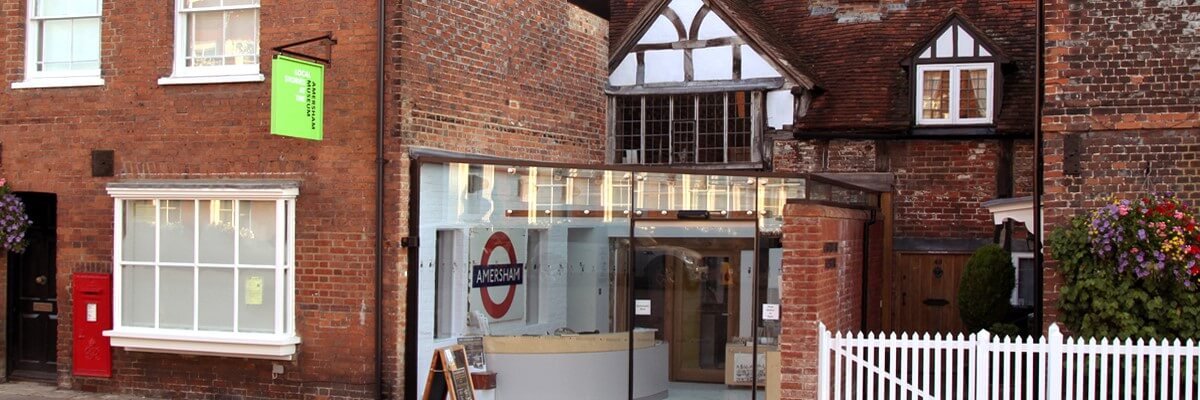This article was written by Sir John Johnson for the Amersham Society/Amersham Museum newsletter and is reproduced here with permission.
In 2007 we had an interesting talk on Quakers in the Chilterns given by Mrs. Sue Smithson who is the Librarian at Jordans meeting-house. The Society of Friends, often known as the Quakers, has been an established part of religious life in the Chilterns since the 1600s. It was rooted in the teachings of Jesus as set out in the Sermon on the Mount. Quakers refused to swear oaths and believed in a direct awareness of God without a human intermediary. Hence they were suspected as dissenters by ecclesiastic and civil authorities.
The Society of Friends grew to prominence first in the North of England. In the early years of the Civil War, George Fox found kindred spirits among the ‘Seekers’ of Westmorland. He spoke at a big gathering on Pendle Hill in Lancashire. He, and a band of Quakers known as the ‘Valiant Six’, dispersed across the country to spread their views. The organization was set up in 1667 with a series of monthly meetings.
The Chilterns were fertile country for dissenters. Small communities were tucked away in the woods and valleys of Hertfordshire and Buckinghamshire and were able to gather clandestinely. There were vivid local instances of persecution. In 1665 a prominent Quaker, Edward Perrott, died . Many Quakers joined his funeral procession. It was stopped outside the Griffin Hotel by the JP who pushed the coffin off the shoulders of the bearers and arrested them. The coffin lay in the sun all day and later that night was buried in unconsecrated ground.
In Amersham Quakers are thought to have gathered since 1655, at first in private houses. One of the notable figures was Thomas Ellwood. He was taken in 1659 as a youth to visit Isaac and Mary Penington who lived at the Grange in Chalfont St Peter. Thomas was converted to Quakerism. The Grange was confiscated at the Restoration and Isaac Pennington was sent to jail. Mary moved to Botrells Farm in Chalfont St. Giles and then to Bury Farm in Amersham before buying Woodside Farm on Amersham Common. Thomas Ellwood found a cottage in Chalfont St Giles for John Milton who sought escape from the Plague. Then came the Restoration and the Act of Toleration in 1689. The Quakers registered their meeting-house for worship in Whielden Street.
To understand Quakerism in our area, the best place to go is Jordans. William Penn came to the meeting-house for worship after he courted and married the step-daughter of Isaac Penington. Hence the connection with Bury Farm and Amersham. The Jordans meeting-house is a place of pilgrimage; a simple brick house where building started in 1688. It was damaged by fire a few years ago and repaired. (William was married in Chorleywood and he and his wife lived for a while in Rickmansworth.)
William Penn, of course, went to the American colonies, where Pennsylvania is named after him. But he came back to England before long, and his remains with those of his second wife are buried in the graveyard. It is a calm and beautiful spot looking out across a south sloping lawn to the woods of the Chilterns. Go there in spring when the daffodils are in bloom and sit on one of the seats reliving a part of our religious history.
‘SHOOTING THE WRONG FOX’
This article was written by Rector Tim Harper for the Amersham Society/Amersham Museum newsletter and is reproduced here with permission.
How delightful to receive my copy of the Amersham Society Newsletter and read the article on the holy and devout ‘Quakers in the Chilterns’ and their great leader George Fox, to find it illustrated with a picture of the notorious libertine Georgian MP Charles James Fox! I am sure the latter would roar with merry laughter at the mix up. I am not so sure about the former!
The Quakers certainly had a hard time locally. In George Fox’s time and later, my predecessors, especially Rev. Robertshaw in the early 18th century, pursued them ruthlessly for unpaid tithe money. In 2001 I found the original court papers from the time, lying about in the vestry at St Mary’s Church, and sent them off for safe keeping to the Bucks Record Office.
George Fox was renowned for the depth of his spiritual insight and his determination to live out his faith as he saw it in the teeth of Establishment opposition. He and his followers were rudely nicknamed ‘Quakers’, for their habit of ‘Quaking’ at the Word of the Lord. However, the seriousness of their faith put the Established Church to shame.
A century and a half later, the witty Charles James Fox had his good points too: kindest of friends, a wonderful Parliamentary orator, noted anti-slavery campaigner, and defender of the rights of religious minorities and political radicals. His private life however was rather colourful – glutton, drunkard, libertine, gambler, debtor, lover (among others) of Georgiana Duchess of Devonshire, and long-time enemy of King George III who regarded him as a moral degenerate of the worst sort!
Saints and sinners: they brighten up our lives considerably. Maybe there is something to be learned from both these gentlemen named Fox. Is there not a balance to be found? A little more enjoyment of the good things of life with Charles, tempered with a little more ‘Quaking’ at the Word of the Lord with George, would do us all good!

